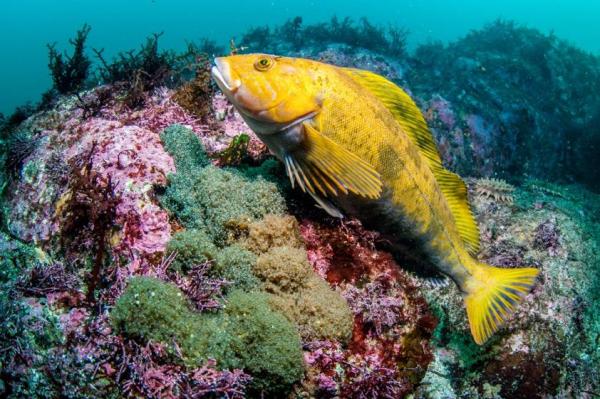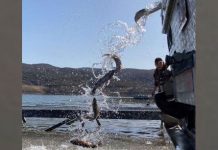
SAPPORO, Japan, Oct. 17 (UPI) — All all-female species can grow their populations much quicker than a species that is half male, half female.
Males can’t birth offspring, but they do offer valuable genetic material. Without access to this material, all-female species are often less able to adapt to changing environmental circumstances — and thus, their long-term survival suffers.
Researchers from Hokkaido University in Japan have found a pair of all-female hybrid fish species that skirt this problem by mating with the males of the species that provided them their original maternal genes.
The naturally occurring greenling strains, Hexagrammos octogrammus/H. agrammus, or Hoc/Hag , and H. octogrammus/H. otakii, Hoc/Hot, are found in the North Pacific and produce only female offspring. The two hybrids maintain genetic diversity by regularly reincorporating genetic material from H. octogrammus males.
Mating with Hoc males triggers egg development. Both male and female genetic material play a role in embryo development, but the offspring ditches the male genome when they begin to develop their own eggs.
Genetic analysis of the new hybrid species revealed they split off from a common ancestor roughly 1.5 million years ago. The analysis — detailed in the journal Ecology and Evolution — also showed Hoc/Hot hybrids aren’t the result of mating among Hoc and Hot specimens. Instead, hybrid Hoc/Hag females began mating with bigger Hot males because they offer better egg protection.
Researchers believe the Hoc/Hag females began opting for Hot males, becoming Hoc/Hot hybrids, between 2,000 and 20,000 years ago. This switch likely boosted their long-term survivability.
“When a female descendant of one of these backcrossed Hocs mates with a Hag male, a new all-female Hoc/Hag hybrid lineage arises,” lead study author Hiroyuki Munehara said in a news release. “This could be another factor that increases the diversity of Hoc/Hac hybrids, increasing their survivability.”






